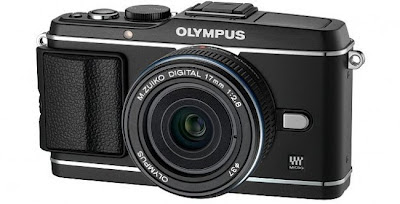Which Form Factor Do You Prefer?
An easy way to think about selecting a mirrorless system camera is
simply which form factor you prefer. Do you want something really slim
and easy to carry, or are okay with something a little bigger? Or do you
prefer a mirrorless camera which handles like a DSLR camera, with a
viewfinder and the familiar hand-grip?
Slimmest & Smallest
The slimmest and smallest mirrorless system cameras are also, not
coincidentally, the most basic and affordable mirrorless system cameras.
Think the sensor of a mirrorless camera with the handling of a digital
compact. While these options are good for those on a budget, the smaller
sizes don't always handle well. While the cameras are smaller, the
lenses are the same size, so when you fit them on the camera's heft can
feel front heavy. Examples of these cameras are Pentax Q, Olympus E-PM1 and the Panasonic GF3
A Comfortable Compact
A chunky but comfortable size is where most mirrorless system cameras
are at, and it's really the sweet spot in mirrorless system camera
design.
Sure, they're bigger than your standard compact camera and aren't
pocketable, but they'll still fit nicely in a normal bag and are light
enough to comfortably carry. And they're lighter and smaller than any
DSLR camera for sure. The other key point about this size of mirrorless
system camera is that they don't skimp on the manual controls which
enthusiasts love. So you can still shoot manually, like a DSLR camera,
with a small camera body. And when you mount lenses on these cameras,
the heft usually feels just right.
Examples of these cameras include the Nikon 1 V1, the Olympus E-P3, the Panasonic GX1, the Samsung NX200 and the Sony NEX-5N.
 |
| Olympus E-P3 |
Do You Want to Buy More Lenses?
The fun with mirrorless system cameras is that, like DSLR cameras,
you can swap lenses and increase your repertoire of shots, from
wide-angle photographs of landscapes to macro shots of insects. But
there are also users who buy mirrorless system or DSLR cameras and never
go beyond the kit lenses which came in the box. If you're one of those
users, then you can skip this section and go to the next one below.
If, however, you want to buy more lenses, then you have a little more to think about.
What's the Big Deal about More Lenses Anyway?
Before we go more into mirrorless system standards and their lenses,
you may be wondering what the big deal is about getting more lenses
anyway. The simple answer is that more lenses allow you to shoot more
expressively with better results.
For example, have you ever seen a photograph shot with a DSLR camera
which had a sharply focused subject but a beautifully blurry background?
You can get that effect with what's known as a wide-aperture lens (even
though there are compact cameras with wide-aperture lenses, you won't
be able to get the same richly blurred backgrounds with their smaller
image sensors). Similarly, you can also grab wide landscapes with
wide-angle lenses, or get zoom amazingly far with telephoto lenses.
Lenses enhance the camera you already have, letting you shoot more
creatively than if you only had a single lens.
 |
| Panasonic and lens |
 |
| Sony and lens |
 |
| Pentax and lens |
Even though we call them mirrorless system cameras, there really
isn't a single mirrorless system. Instead, there are several (seven
today) mirrorless systems in the market today, each manufactured by the
different camera companies. Let's make it simple and call them
mirrorless standards instead of systems in this article.
The first and most established mirrorless standard is Micro Four
Thirds. Launched in 2008, the Micro Four Thirds standard has the benefit
of having two companies, Panasonic and Olympus, put their weight behind
it. Because of that, it's the standard today with the largest
collection of native lenses, twenty five at the time of this
writing. The other mirrorless standards are standalone standards; each
is supported only by the company which created it. Samsung's NX standard
has the second largest collection of lenses, ten in total. Sony's NEX
standard has seven lenses. Nikon's 1 standard has four. The new Fujifilm
X standard has three prime lenses at launch. There are other standards
like the Pentax Q and Ricoh GXR, and some people also place Leica's
digital M-series as mirrorless system cameras.
The reason why you need to know this is because if you're a lens
aficionado then it's more likely you'll prefer the standard with a wider
native lens selection, which, at the moment is Micro Four Thirds.
source
http://www.hardwarezone.com.sg/feature-everything-you-need-know-about-mirrorless-system-cameras/how-do-i-choose-mirrorless-system-camera
source
http://www.hardwarezone.com.sg/feature-everything-you-need-know-about-mirrorless-system-cameras/how-do-i-choose-mirrorless-system-camera


your welcome :) . but actually now there are many company make a mirrorless camera :D
ReplyDelete